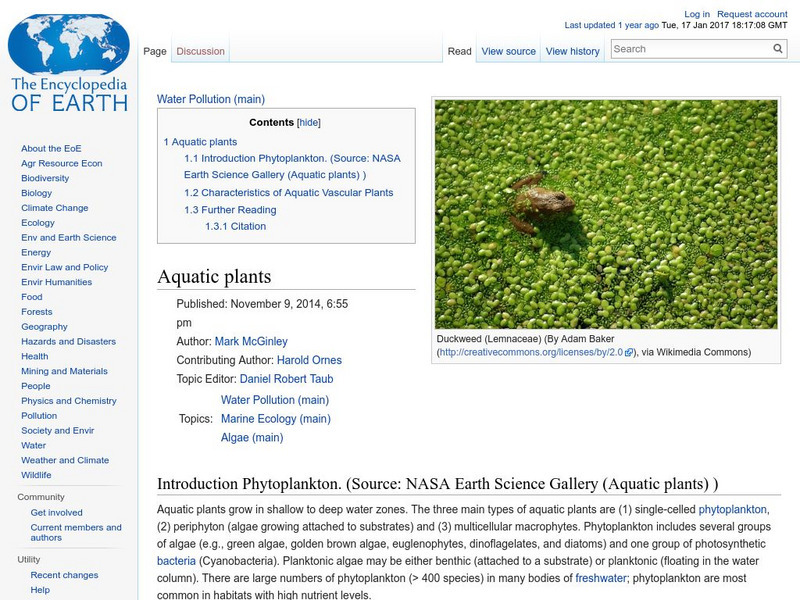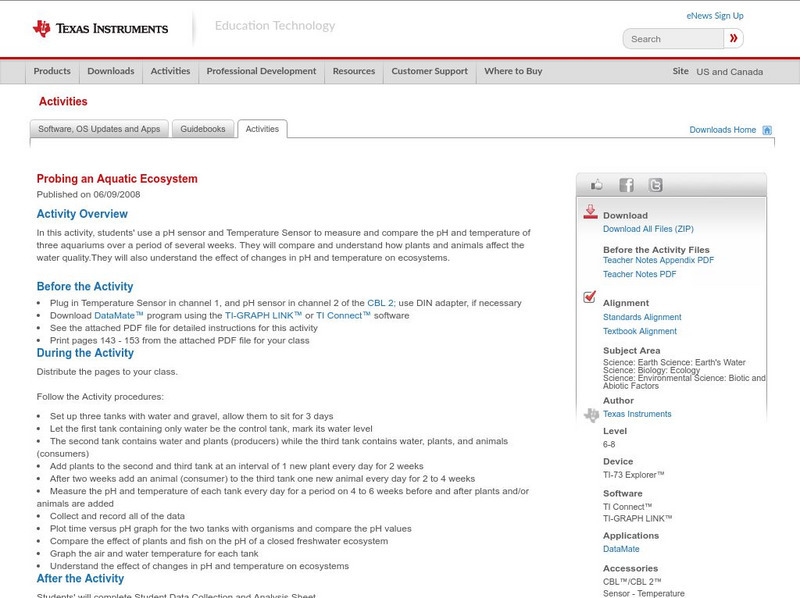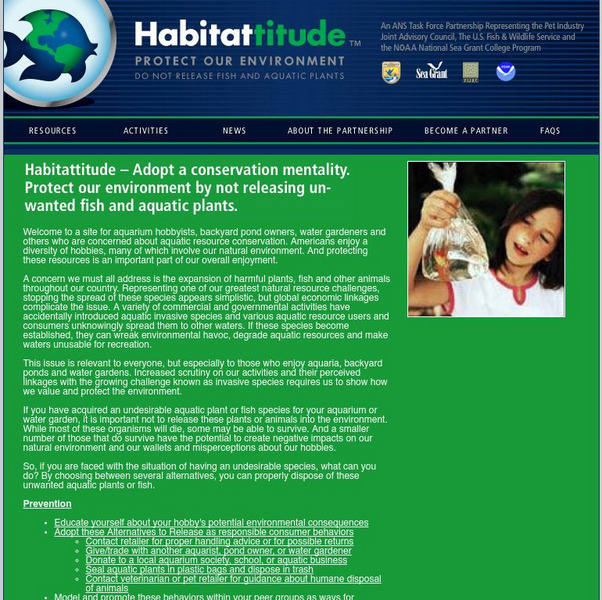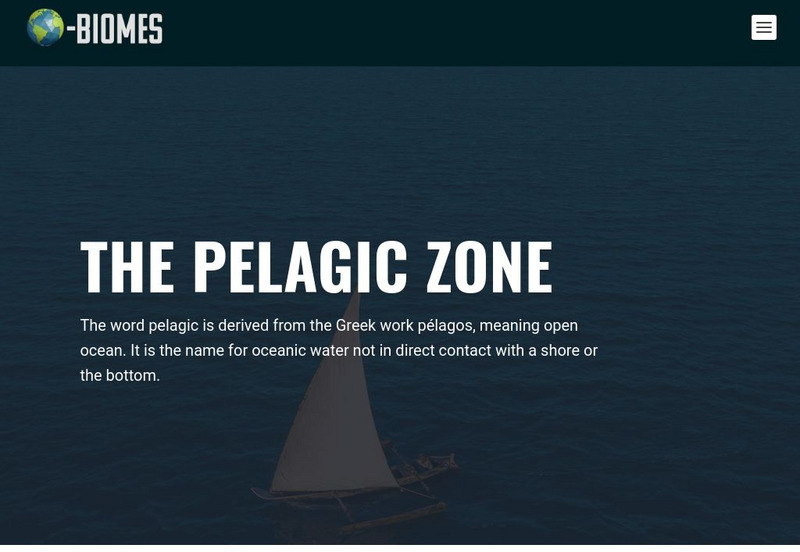Hi, what do you want to do?
Curated OER
Coastal Development
Learners examine how a coastal area changes after it has been developed. They discover the impact of development on the environment. They illustrate their own non-developed area and change it into a developed area.
Curated OER
Water Quality
Students are presented with a hypothetical situation to investigate the water quality of the James River. They are given data to analyze and put into the graphic organizer that is included to help solve the problem. The lesson plan...
Curated OER
Wetlands Project
Students discover how wetlands filter out contaminants before they can reach other bodies of water. In groups, they design and build a model of a stormwater wetland. They test the water quality and inform their classmates about the...
Curated OER
Exploring Fish Anatomy and Commercial Fishing Gear
Students investigate commercial fishing by exploring the technical methods. In this environmental activity, students identify the fish that are most commonly consumed by humans and trace their path from ocean to plate. ...
Curated OER
Australian Ecology and Bushfires
Eighth graders discuss the different types of ecosystem. In this earth science lesson, 8th graders explain the benefits and harm of fire. They research articles about bush fires or controlled burn instance and share it with the class.
Encyclopedia of Earth
Encyclopedia of Earth: Aquatic Plants
Article describing types of freshwater aquatic plants and their characteristics.
BiologyWise
Biology Wise: Photosynthesis in Aquatic Plants
Discusses the similarities and differences between photosynthesis in land plants versus aquatic plants, and explains how photosynthesis works in aquatic plants.
Untamed Science
Untamed Science: Biology: World Biomes: Intertidal Zone: Aquatic Biome
Learn about the flora and fauna of the intertidal aquatic zone and the characteristics that describe this aquatic biome through reading and watching video clips. [6:42]
University of Florida
Uf Ifas: Silent Invaders
Learn about plants specific to Florida including the effects of invasive species.
Science Buddies
Science Buddies: Home Sweet Biome: How Do Plants Grow in Different Environments?
In this science fair project you will learn about biomes and how different climatic conditions affect plant growth. This can explain why some plants and animals are similar in different areas of the country, and in other parts they are not.
Curated OER
National Park Service: Alien Plant Invaders of Natural Areas
A virtual who's who of invasive plants, herbs, vines, shrubs, and trees. This comprehensive site provides easy-to-read fact sheets that contain native ranges, plant descriptions, ecological threats, U.S. distributions & habitats,...
PBS
Pbs: Secrets of the Ocean Realm
At this site students can read about sea creatures and ocean plant life, and see pictures of each.
University of Florida
Florida Museum: South Florida Aquatic Environments: Introduced Species
The transport of living plants and animals to areas beyond their native range has been practiced by human beings for thousands of years. While some introductions are intentional, others occur by accident or happenstance. Regardless of...
Texas Instruments
Texas Instruments: Probing an Aquatic Ecosystem
In this activity, students' use a pH sensor and Temperature Sensor to measure and compare the pH and temperature of three aquariums over a period of several weeks. They will compare and understand how plants and animals affect the water...
Other
Aquatic Nuisance Species Task Force: Habitattitude
Dedicated to aquatic resource conservation, this task force addresses the expansion of harmful plants, fish, and other animals and invasive species
Curated OER
Educational Technology Clearinghouse: Clippix Etc: Anhinga Among Aquatic Plants
Anhinga Among Aquatic Plants
PBS
Pbs Learning Media: Duckweed
These images of duckweed (Lemna spp.) illustrate the basic anatomy and environment of these fast-growing plants.
Tramline
Tramline, Inc.: Virtual Ocean Field Trip
In this enchanting site, students will learn basic principles about oceans and will be introduced to an assortment of sea life, both plant and animal. Other interesting ocean links can be found on the teacher resource section of this link.
University of Florida
South Florida Aquatic Environments: Florida Keys: About the Keys
The Florida Museum of Natural History offers an excellent review of the reefs, mangrove and seagrass habitats of the Florida Keys. Spend some time learning about this unique location.
Other
What Are Aquatic Nuisance Species and Their Impacts?
This site offers a basic explanation of what nonindigenous species are, their environmental and economic impacts, and public health concerns. Specific examples of nonindigenous animals and plants are given and the huge impact they have...
The Wild Classroom
The Wild Classroom: Biomes of the World: Intertidal Zone
Learn about the intertidal ecosystem. Find out about plants, animals, adaptations, and conservation efforts.
The Wild Classroom
The Wild Classroom: Biomes of the World: Coastal Ocean Biome
Learn about the coastal ecosystem. Find out about plants, animals, adaptations, and conservation efforts.
The Wild Classroom
The Wild Classroom: Biomes of the World: Oceanic Pelagic Biome
Learn about the oceanic pelagic ecosystem. Find out about plants, animals, adaptations, and conservation efforts.
The Wild Classroom
The Wild Classroom: Biomes of the World: The Deep Sea Biome
Learn all about the abyssal ocean ecosystem. Find out about plants, animals, adaptations, and conservation efforts.
Other popular searches
- Aquatic Plants and Animals
- History of Aquatic Plants
- Aquatic Plants and Ph
- Aquatic Plants and Animals.
- Btb and Aquatic Plants
- Tb and Aquatic Plants
- Aquatic Plants (Science)
- Aquatic Plants Science
- How Plants Grow Aquatic

























